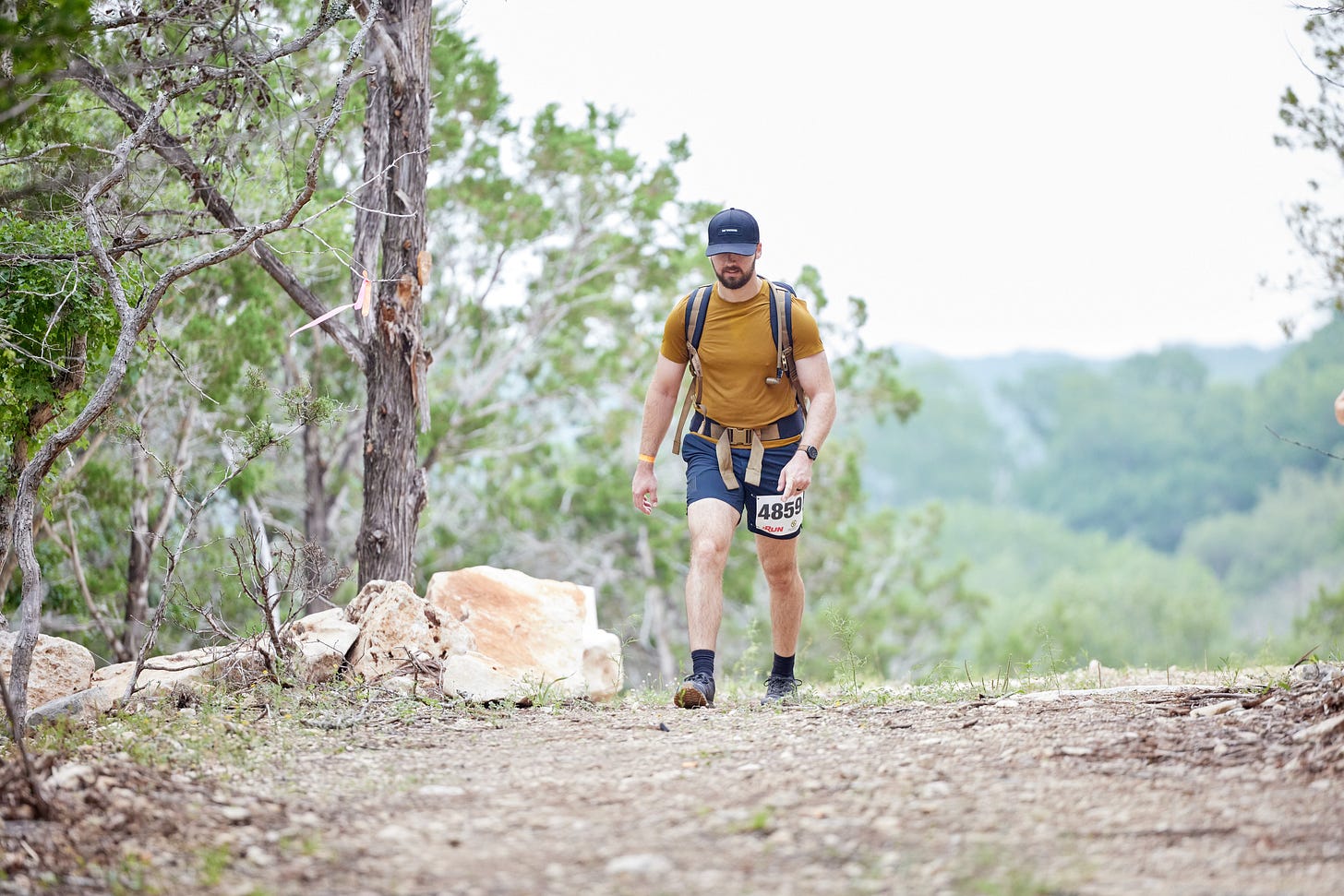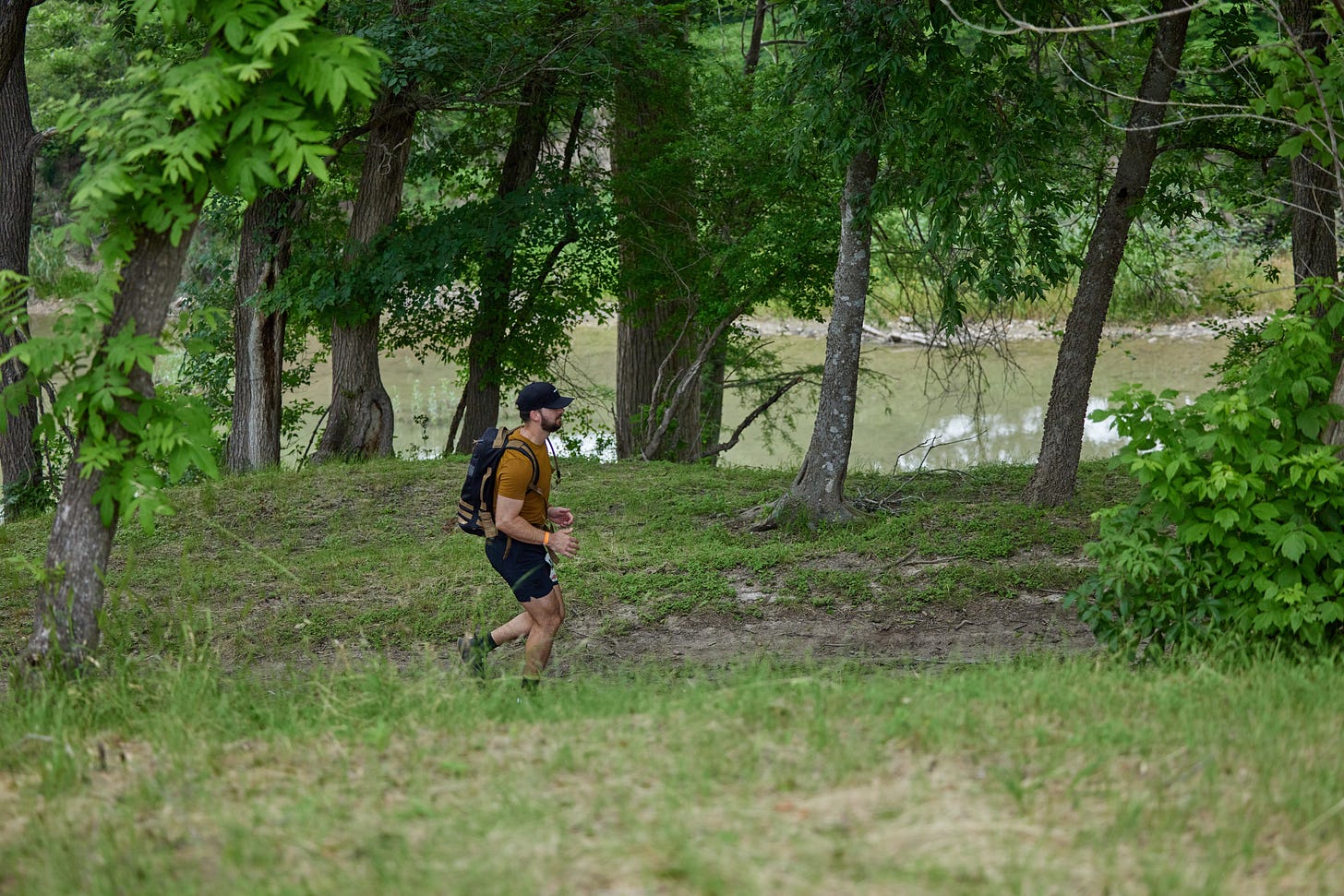A Ruck Ton of Weight
Why walking with weight is a simple health hack with huge benefits.
We may not have realized it at the time, but all those school days lugging around a backpack full of textbooks and notepads may have been beneficial to our bodies. Outside the school campus, studies have been done by military branches (Army, Marines, and Navy) showing that the ideal heavy load for a soldier to carry is fifty pounds. The justification is that fifty pounds allows for a soldier to maneuver quickly while also building elite strength and endurance over time. This form of walking or marching with a weighted pack is referred to as rucking.
Rucking is the verb form of the word ‘Ruck”, which is essentially a heavy sack (not to be confused with a backpack) used to hold all the items needed for the particular role of a soldier. The activity of rucking was originally known only within the military community, but now has gained popularity in the civilian world. One could argue the activity of rucking gained notoriety when Jason McCarthy, a prior Green Beret, started his company GoRuck.
GoRuck
GoRuck’s most popular product is their rucksacks. The company has a variety of rucksacks uniquely designed for either training or traveling. The training rucksacks are designed with a designated pocket for weighted plates, which for standard rucksacks can carry up to a thirty pound plate, while some of the larger rucksacks have two plate slots that can hold up to seventy-five pounds of plate weight. Other rucksacks are used more for traveling or commuting purposes. The commonality with all the rucksacks is that they are nearly indestructible, made to withstand the toughest environments and training sessions.
The reach of the company goes beyond just their products, though. GoRuck also puts on a variety of events: Star Courses that range anywhere from 5K to 50 miles of rucking. Tactical courses that teach gun owners proper technique and skill depending on the firearm. They also have their original event, the GoRuck Challenge, which pays homage to historical military events and involve other challenges beyond rucking.
Most recently I completed a GoRuck Tough Challenge called the “Mogadishu Mile”. It was a twelve hour overnight event that involved fifteen miles of rucking. In addition to carrying a rucksack, our group of seventeen individuals were also tasked with carrying four sandbags (ranging 40-120lbs), four hefty water bladders (referred to as “coupons” by the cadre), and an American flag throughout the evening. The event was done on the thirty year anniversary of the “Day of the Rangers”, which was the historical military event that occurred in Mogadishu, Somalia in October of 1993. Throughout the evening our cadre took the opportunity to share the story of the events leading up to the “Day of the Rangers”, to include what happened during the event and what came out of it.
It was one of the most physically and mentally challenging events I’ve ever endured. Upon arriving at our starting point and getting the initial briefing and PT session from the cadre, I immediately began casting doubt on my decision. Very quickly though, I was filed in as a number with the rest of the participants, and the night went on. After arriving back at our starting point twelve hours later, I was proud to receive my “Mog Mile” patch and post event beer with my comrades. Admittedly though, a Budweiser at nine in the morning didn’t savor like I hoped it would.
The Health Benefits
Human beings are sitting a lot. Over the course of human progression into more adaptive and automated lifestyles, human posture has taken a turn for the worse. With approximately 80% of American jobs taking place at a desk, folded shoulders and arched backs have become the result of lengthy sitting and staring into the blue screen abyss. To put it into perspective, if a man wakes up in the morning and gets in his car, he is sitting in his vehicle until he arrives at the office. Then he will walk to his desk and sit there for around eight hours to do his job. Then he will walk back to his car, where he’ll sit down again to drive home. When he arrives home, he’ll most likely sit down to have dinner, then sit down on the couch to watch his television, until he ultimately goes to bed where he’ll hopefully sleep for at least eight hours. If you guesstimate the time, that’s approximately half a day sitting in some capacity.
This type of lifestyle over time can cause a number of issues physically and mentally. While rucking isn’t a cure to all of life’s problems, it’s a good step in the right direction. Rucking most often takes place outside, which gives the body fresh air and access to the sun, while also helping to decrease anxiety levels and lessen stress. Rucking requires standing, which gets the individual on their feet and out of the sitting position. Rucking has a varied level of weight resistance that demands more from the body than just a standard walk, creating better posture and increased bone density.
I’ve found that a lot of people I mention rucking to have a similar reaction: “Wow, doesn’t that hurt your back?” “My knees couldn’t handle that.” Quite the opposite, actually. Using a rucksack improves posture and strength in both the back and knees. Carrying a rucksack with a weighted plate pulls your shoulders back and forces the you to contract their core, which is the correct posture people should maintain while walking or standing. Strength training in general has a benefit of increasing bone density, and wearing a rucksack while walking is adding resistance to areas such as your knees which have to adapt to the heavier weight carried in every step.
Basically, rucking does a lot of good things for our bodies. If you’re in the market for a new bag, or just looking for something different in your daily exercise, try it out. It’s rucking legit.



